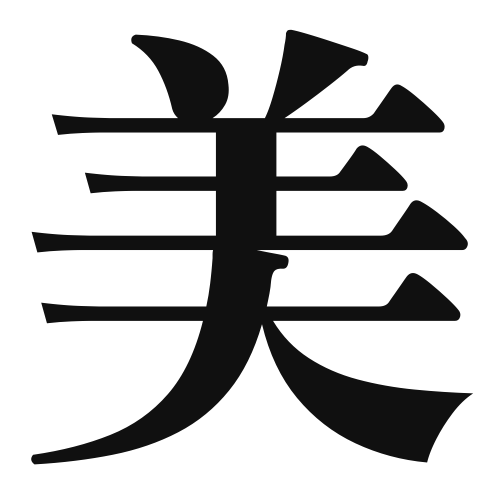1. Overview of Meaning
The kanji “美” (bi) means “beauty” or “beautiful.” It represents the concept of aesthetic appeal and is often associated with art, nature, and harmony.
2. Formation and Radical
The kanji “美” is a compound character that combines elements to convey its meaning. It is made up of the radical 羊 (sheep) and the character 米 (rice). The sheep symbolizes gentleness and grace, while rice represents nourishment and sustenance, together suggesting a beautiful and harmonious existence.
The radical for “美” is 羊, which is often associated with qualities of gentleness and beauty.
3. Examples of Usage
Common words and phrases that include “美” are:
- 美しい (utsukushii) – beautiful
- 美術 (bijutsu) – fine arts
- 美味しい (oishii) – delicious (literally “beautiful taste”)
Example sentences in daily conversation:
- この花はとても美しいです。 (Kono hana wa totemo utsukushii desu.) – This flower is very beautiful.
- 彼女は美術館に行くのが好きです。 (Kanojo wa bijutsukan ni iku no ga suki desu.) – She likes to go to art museums.
4. Synonyms and Antonyms
Similar kanji with related meanings include:
- 麗 (rei) – lovely, elegant (often used in a more poetic context)
- 華 (ka) – splendid, gorgeous (often implies a sense of grandeur)
Antonyms include:
- 醜 (shuu) – ugly
5. Cultural and Historical Background
The concept of beauty is deeply rooted in Japanese culture, influencing art, poetry, and aesthetics. The appreciation of beauty is often reflected in traditional practices such as 茶道 (sado, the tea ceremony) and 花道 (kado, the art of flower arrangement).
Proverbs and idioms related to beauty include:
- 美は一日にして成らず (Bi wa ichinichi ni shite narazu) – Beauty is not achieved in a day, emphasizing the value of patience and effort in cultivating beauty.
